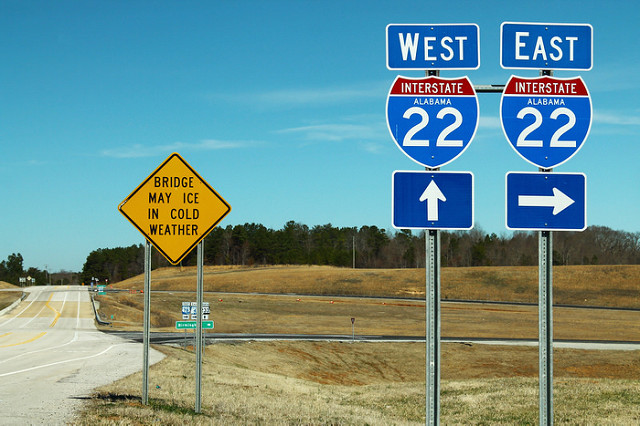
Both Clinton and Trump have big plans for fixing America’s public underpinnings.
On Tuesday, GOP presidential nominee Donald Trump said that he would "at least double" the amount of money in Democratic nominee Hillary Clinton’s five-year, $275 billion infrastructure plan.
Truth be told, that amount, which would be close to $550 billion dollars, will still not be enough to get our nation’s infrastructure to a state of good repair. The American Society of Civil Engineers estimates we need $3.6 trillion worth by 2020.
Infrastructure investment is critical to U.S. manufacturing. Infrastructure investment not only serves as a market for iron, steel, and concrete, but also for buses and trains. Long term infrastructure investment provides manufacturers with a stable market that allows them to make investment decisions – and that means new manufacturing jobs in the United States.
What’s more, investment will also increase the global competitiveness of U.S. manufacturing. Such as it is, America’s old and broken infrastructure grid makes the economy less competitive than many of our major trading partners, and makes manufacturers less efficient in getting goods to market.
After a decade of status quo infrastructure funding, spending three-digit numbers followed by the word billion is something I can be excited about. But, like anything else, the devil is in the details.
So let's get to the details!
The details that Trump offers at the moment can be found in both his recent statements and the Republican party platform adopted in Cleveland last month. While speaking to Fox Business Channel, Donald Trump said, "We're going to have to go out with a fund. We'll get a fund. …We'll make a phenomenal deal with the low interest rates, and we're going to have to rebuild our infrastructure. We have no choice." As for who or what would contribute to the fund, Trump said "people," "investors" and "citizens" would, and he added that the contributions would be sold as infrastructure bonds.
The GOP party platform, meanwhile, turns a lot of the responsibility of funding transportation projects over to state and local agencies, and removes every non-road building project from the Highway Trust Fund, while vowing to “remove legal roadblocks to public-private partnerships that save tax-payers money and bring outside investment to meet a community’s needs.”
For domestic manufacturers, it’s important to ensure that any public-private partnership for infrastructure projects maximizes its job-creating potential by sourcing iron, steel, and manufactured goods from the United States.
Yet even then, I’m not sure what message this sends to bus and rail equipment manufacturers, as the GOP party platform proposes “to phase out the federal transit program” and “end federal support for boondoggles like California’s high-speed train to nowhere.”
Here’s why: Current federal funding in both these areas requires a preference for domestic manufacturing, and a shift could shrink the market for domestic manufacturers. New funding streams without contract language similar to the federal Buy America preferences may not give U.S. manufacturers a fair shot at the infrastructure market.
On the other side of the aisle …
Clinton released her ideas for infrastructure investment during her primary campaign. And just as she told everyone watching her acceptance speech last week at the recent Democratic National Convention in Philadelphia, Hillary Clinton sweats the details. Her plan for infrastructure investment is no different.
The Democratic presidential nominee offers an increase in federal infrastructure funding by $275 billion over a five-year period, and she plans to get these funds through business tax reform. Clinton’s plan allocates $250 billion to direct public investment, and allocates the other $25 billion to a national infrastructure bank. The bank would leverage its $25 billion in funds to support up to an additional $225 billion in direct loans, loan guarantees, and other forms of credit enhancement.
With that last detail, Clinton’s campaign claims her infrastructure plan would in total result in up to $500 billion in federally supported investment, which isn’t too far off from the amount Trump mentioned this week. U.S. manufacturers should note that federally supported infrastructure funds include common-sense Buy America preferences. According to Clinton’s plan, the bank will also operate with domestic sourcing requirements for project materials.
The bottom line for both is:
The Democratic nominee offers a major investment in (and a detailed plan for) U.S. infrastructure that will support U.S. manufacturing.
The Republican nominee is pitching a really big number, but without much detail on where it will come from or how it will be invested in infrastructure. The GOP party platform shifts the responsibility for non-road related projects to state and local governments, while streamlining the traditional funding source of infrastructure; and both of those moves would bring into question the applicability of federal Buy America preferences.
Election years bring a lot of promises. Hillary Clinton offers voters a detailed infrastructure investment plan, and if elected the voters will have something to hold her to. Donald Trump talks a good game, but as of now hasn’t offered voters much in terms of detail.
